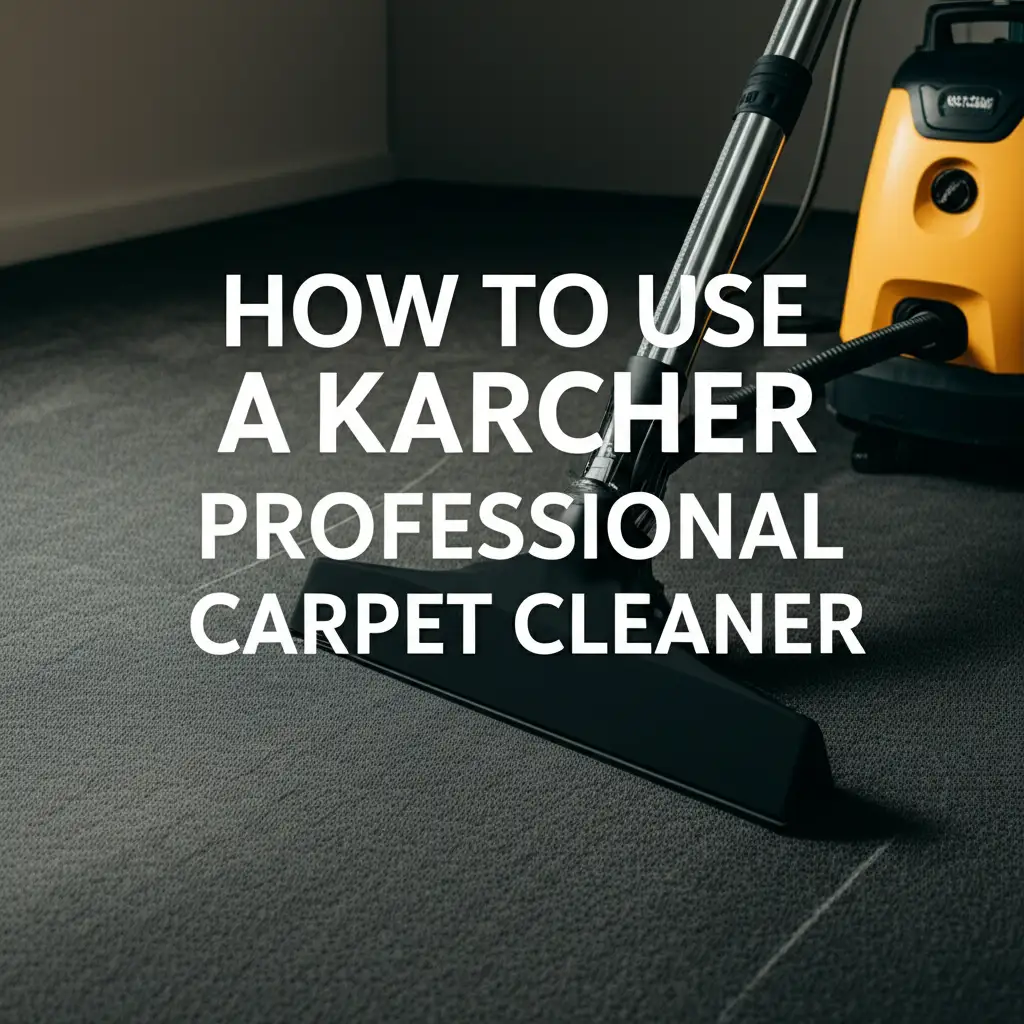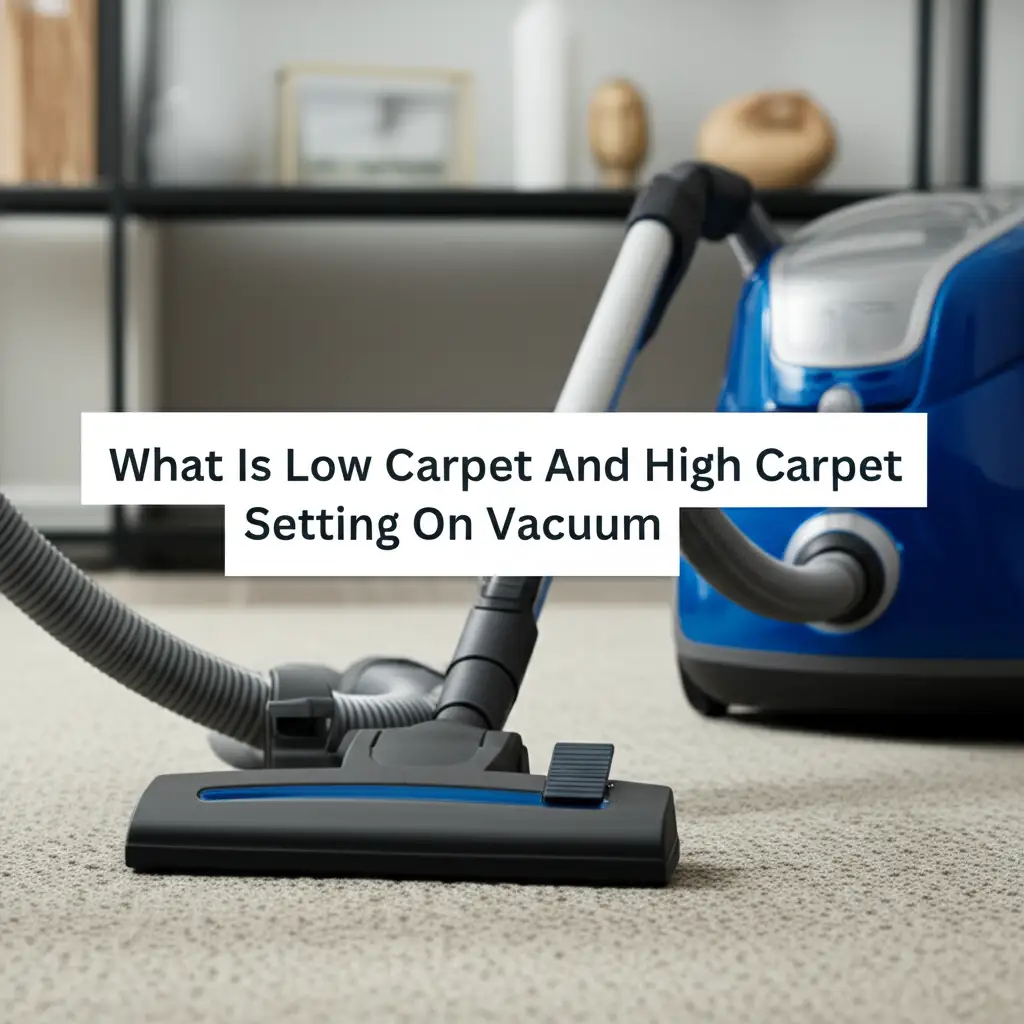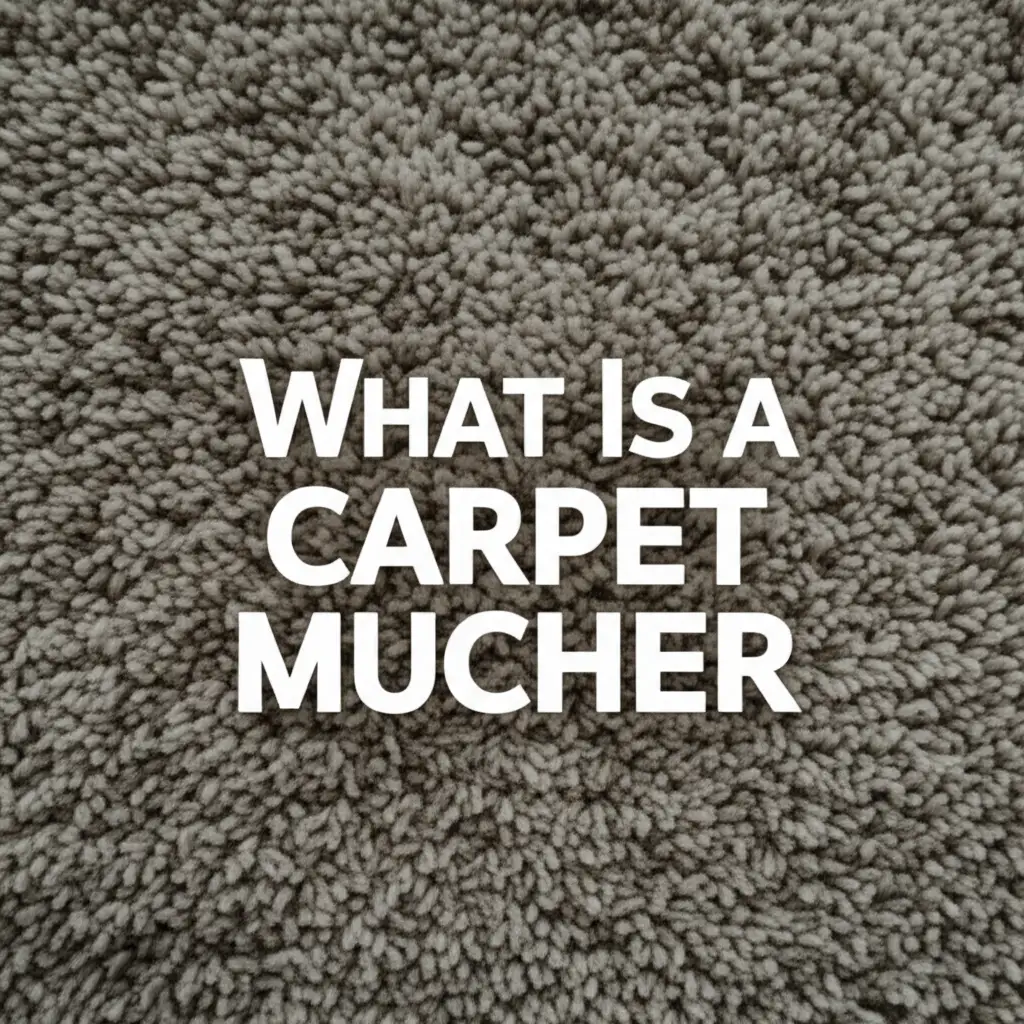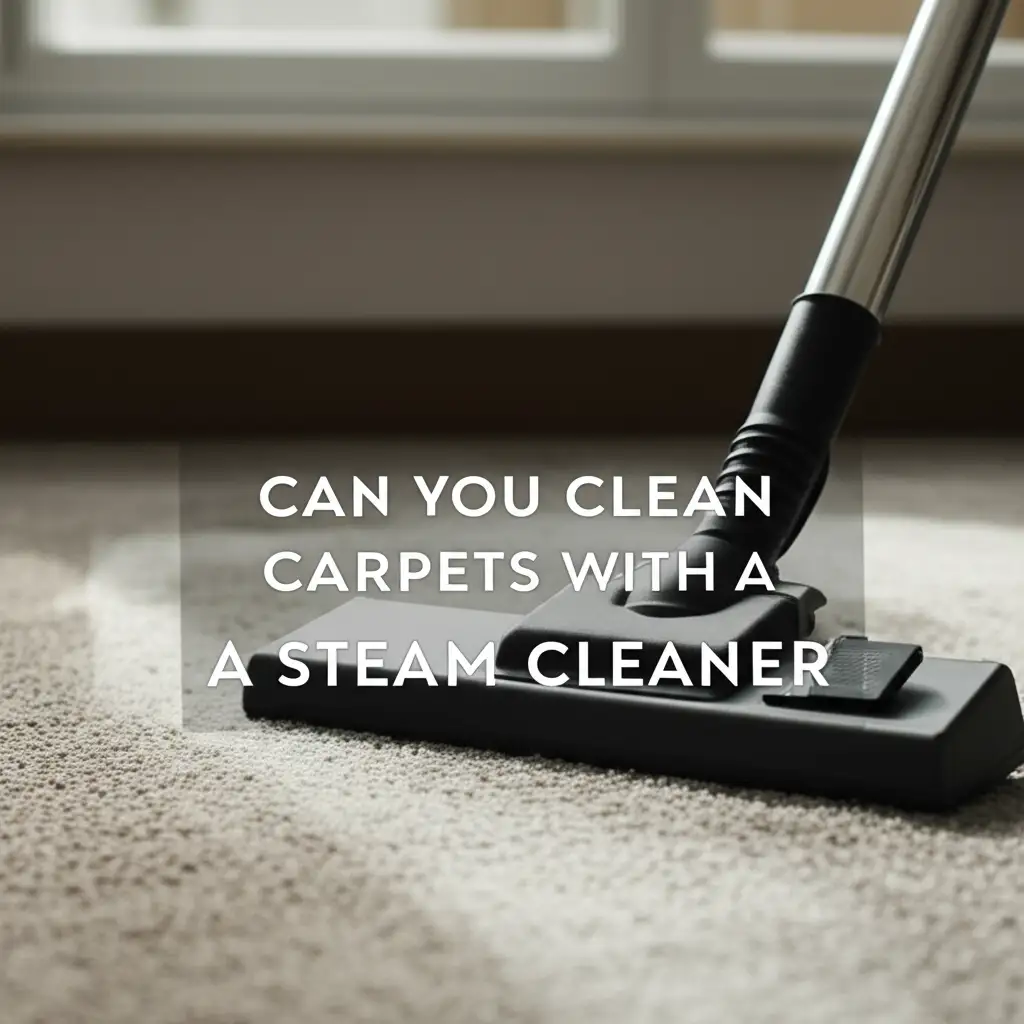· Tessa Winslow · Carpet Cleaning, Home Maintenance, Cleaning Tips · 17 min read
Which Cleans Better Low Or High Carpet Settings
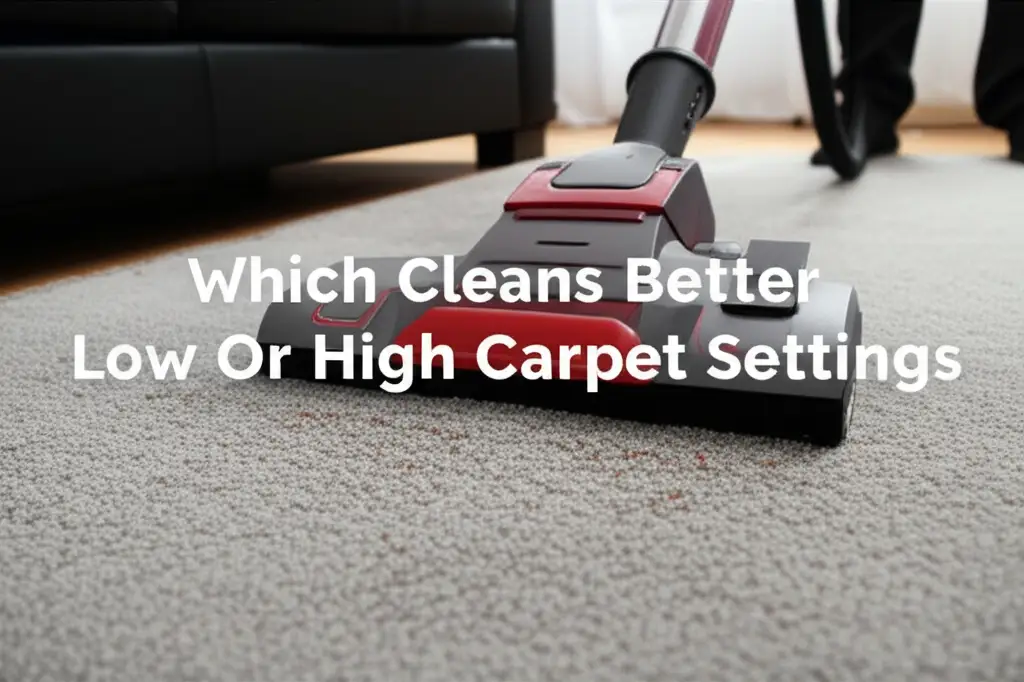
Optimal Carpet Cleaning: Low or High Settings?
My carpet often shows dirt. I wonder if I use the correct vacuum setting. Many people ask, “Which cleans better, low or high carpet settings?” It is a common question. People want clean carpets. They also want to keep carpets in good condition. The right setting improves cleaning power. It also protects carpet fibers. Incorrect settings cause damage. They also leave dirt behind. This article explores the best carpet settings. We discuss vacuum cleaners. We also cover carpet cleaning machines. You will learn how to clean effectively. You will also keep your carpets safe.
Takeaway
- Match vacuum setting to carpet pile height.
- Use lower settings for delicate carpets or surface dirt.
- Select higher settings for deep cleaning or thick carpets.
- Always test new settings in a hidden area first.
- Adjust carpet cleaner settings for proper water extraction.
- Avoid over-agitation or excessive moisture.
The best cleaning setting depends on your carpet type and the cleaning task. Generally, lower settings suit delicate carpets and light surface dirt. Higher settings work for thick carpets and deep-seated grime. Always adjust based on your specific needs for optimal results.
Understanding Your Carpet’s Pile Height
Carpets vary greatly. Their pile height is a major difference. Pile height refers to the length of the fibers. This length affects how you clean them. It also impacts how much dirt they hold. Matching your cleaner’s setting to the pile height is important. It ensures effective cleaning. It also prevents damage to the carpet.
A carpet’s pile height is a key factor. It tells you how long the carpet fibers are. This length affects how much agitation the carpet needs. It also impacts how much suction the carpet can handle. For example, a thick, plush carpet needs different treatment than a thin, flat one. Knowing your carpet’s pile helps you choose the right vacuum setting. It stops damage. It also makes sure your carpet gets truly clean.
Low Pile Carpets
Low pile carpets have short, dense fibers. Examples include Berber and some commercial carpets. These carpets are durable. They resist crushing. They are easy to vacuum. Dirt stays closer to the surface. This makes them simpler to clean.
You will find low pile carpets in busy areas. Think of offices or hallways. Their short fibers trap less dirt deep down. A vacuum with a lower brush height setting works well here. This setting lets the brush gently agitate the surface. It lifts dirt without excessive wear. Using too high a brush setting on low pile carpet can lift the vacuum too much. This reduces suction. It leaves dirt behind.
High Pile Carpets
High pile carpets have long, loose fibers. Shag and Frieze are common types. These carpets feel soft. They look luxurious. They also trap more dirt deep within their fibers. Standard vacuum settings might not reach this dirt.
High pile carpets require more effort. Dirt settles deep at the base of the fibers. A vacuum with a higher brush height setting is often necessary. This allows the brush to reach and agitate the base of the fibers. It helps lift embedded dirt. Too low a brush setting can make the vacuum hard to push. It can also damage the long fibers. It can also cause premature wear. Understanding how carpet cleaning works helps you choose the correct approach.
The Science Behind Vacuum Cleaner Settings
Vacuum cleaners use two main forces to clean. These are suction and agitation. Suction pulls dirt into the machine. Agitation, usually from a brush roll, loosens embedded dirt. Your vacuum’s settings control these two forces. Adjusting these settings helps you clean different carpet types. It also ensures you remove dirt efficiently.
The vacuum cleaner’s job is simple. It removes loose debris and trapped particles. The way it does this involves a delicate balance. Too much suction on a delicate rug can damage it. Too little agitation on a thick carpet leaves dirt behind. Understanding the role of suction and the brush roll helps you get the best clean. It also extends the life of your vacuum and your carpets.
Suction Power Explained
Suction power is how strongly the vacuum pulls air. It lifts loose dirt and debris. Most vacuums have adjustable suction. You might find a dial or a slider. A higher suction setting pulls more powerfully. This is good for large debris. It is also good for deep dirt.
However, high suction can sometimes be too much. On very thin rugs, it can suck the rug into the vacuum head. This makes it hard to push. It can also damage the rug. For delicate items, reduce the suction. This allows the vacuum to move smoothly. It still picks up surface dirt. Adjusting suction helps clean various surfaces effectively.
Brush Roll Agitation
The brush roll is a spinning brush. It sits at the bottom of the vacuum head. Its bristles agitate carpet fibers. This action dislodges embedded dirt. It also lifts pet hair. Most vacuums have an adjustable brush roll height. This control lifts or lowers the brush.
For high pile carpets, you set the brush roll higher. This lets the bristles reach deep into the fibers. For low pile carpets, you set it lower. This ensures the bristles make good contact with the surface. Incorrect brush height causes problems. Too low a setting makes the vacuum hard to push. It also wears down carpet fibers. Too high a setting lifts the brush off the carpet. This reduces agitation. The vacuum just glides over the dirt. Using the correct brush height setting helps to make sure you remove any lingering odors from your carpet. Learn more about how to vacuum carpets that smell.
When Low Carpet Settings Excel
Low carpet settings are not just for light cleaning. They are important for carpet care. These settings use less aggressive agitation. They also might use lower suction. This approach protects delicate carpets. It also prevents premature wear. You should use low settings in specific situations. It ensures your carpets last longer. It also keeps them looking great.
Choosing the correct setting is vital. Many people think “more power is better.” This is not always true for carpets. Low settings offer a gentle touch. This is perfect for daily upkeep. It also works for carpets that need special care. I always advise starting gently. Then, increase power only if necessary. This approach protects your investment in your carpets.
Surface Dirt and Daily Cleaning
For everyday dust and crumbs, a low setting is perfect. This applies to both suction and brush height. Surface dirt does not need deep agitation. A gentle pass is enough. Daily or frequent vacuuming removes these loose particles. This prevents them from being ground into the carpet fibers.
Regular light cleaning keeps your home tidy. It also extends the time between deep cleans. Using a low setting for daily tasks saves energy. It also reduces wear on your vacuum cleaner. It ensures you collect surface debris efficiently. This maintains a clean appearance without being overly aggressive.
Delicate Carpets and Rugs
Some carpets are very delicate. Examples include oriental rugs, silk rugs, or older wool carpets. These materials are fragile. High agitation can damage their fibers. It can pull out threads. It can also cause fuzzing. Low settings protect these valuable items.
When cleaning delicate carpets, turn off the brush roll. Many vacuums have this option. If not, raise the brush roll height to its highest point. This relies solely on suction. It lifts dirt without scrubbing the fibers. This gentle approach ensures the rug’s beauty lasts for years. Protect your fine textiles with careful cleaning.
Preventing Wear and Tear
Constant, aggressive cleaning can damage carpets. High brush roll agitation wears down fibers. This leads to fraying and matting. It shortens the carpet’s lifespan. Using a low setting reduces this friction. It maintains the carpet’s integrity.
Frequent vacuuming with the right, gentle setting preserves your carpet’s look. It keeps the pile standing upright. It also prevents the carpet from looking worn out quickly. Think of it as preventative maintenance. A low setting helps you clean your carpet without ruining it. Learn more about whether daily sweeping can ruin a carpet. This approach keeps your carpet fresh for years.
Maximizing Cleaning with High Carpet Settings
Sometimes, a gentle touch is not enough. For tough dirt, you need more power. High carpet settings provide this. They increase agitation. They also ensure strong suction. These settings are crucial for deep cleaning. They lift stubborn dirt. They also remove deeply embedded pet hair. Knowing when to use high settings makes a big difference. It helps your carpets truly look and feel clean.
High settings are for specific cleaning challenges. They are not for every day. Using them incorrectly can damage carpets. But when used right, they are highly effective. I find them essential for certain areas of my home. These settings tackle the dirt that low settings miss. They are a powerful tool in your cleaning arsenal.
Deep-Seated Dirt and Pet Hair
Dirt and pet hair often get trapped deep in carpet fibers. This is especially true for high pile carpets. Regular vacuuming with a low setting might miss this. A high setting provides stronger agitation. It allows the brush roll to dig deeper. This action dislodges stubborn particles. It also pulls up embedded pet hair.
For homes with pets or heavy foot traffic, high settings are a must. They ensure a thorough clean. They remove allergens and dust mites. This improves air quality. It also makes your carpet feel softer. High settings are good for occasional deep cleaning. They refresh your carpets.
High-Traffic Areas
Hallways, living rooms, and entryways see heavy use. Dirt gets tracked in. It gets pressed deep into the carpet. These areas need more aggressive cleaning. High carpet settings are ideal for these spots. The increased agitation lifts the packed-down dirt.
Focus on these areas during your deep cleaning routine. Use the high setting for a few passes. Then, switch to a lower setting for maintenance. This targeted approach keeps high-traffic zones clean. It also prevents dirt from spreading to other areas. Tackle the toughest spots effectively.
Addressing Tough Stains
While vacuum settings mainly deal with dry dirt, they relate to stain removal. A clean carpet is less likely to hold stains. Also, lifting surrounding dirt helps when treating stains. After treating a stain, a high vacuum setting can help remove any residue. This applies after the spot is clean and dry.
For general carpet stains, the high setting aids in the follow-up. For example, after cleaning a pet stain, you need to extract all residues. A strong vacuum pass helps. When cleaning tough stains, such as pet stains or coffee spills, make sure the area is completely dry. Learn how to clean carpet stains from pets effectively. Also, consider how to get coffee out of your carpet. Find out more about removing coffee spills.
Carpet Cleaner Machines: Wet Cleaning Settings
Carpet cleaner machines, or extractors, use water and solution. They inject these into the carpet. Then, they vacuum up the dirty water. Unlike dry vacuums, they do not have “low” or “high” settings for brush height. Instead, their settings often control water flow and suction power. Proper settings are crucial for wet cleaning. They prevent over-wetting. They also ensure thorough drying.
Wet cleaning is a different process. It involves moisture. This adds a new layer of concern. Too much water can cause problems. Not enough suction can leave carpets damp. My experience tells me balancing water application and extraction is key. This avoids issues like mold or lingering odors. Pay close attention to these settings on your carpet cleaner.
Water and Solution Application
Some carpet cleaners allow you to adjust water flow. A lower flow is for light cleaning. A higher flow is for heavily soiled areas. Using too much water is a common mistake. It can saturate the carpet and padding. This makes drying difficult. It also creates a breeding ground for mold.
Always follow the manufacturer’s instructions for solution mixing. Do not use more cleaning solution than needed. Test the solution on a hidden spot first. Make sure it does not cause discoloration. Apply just enough water to loosen dirt. Avoid soaking the carpet.
Powerful Suction for Drying
After applying water and solution, the machine’s suction extracts it. This is the most important part of wet cleaning. Strong suction removes as much moisture as possible. This speeds up drying time. It also prevents mold and mildew growth.
Ensure your machine’s suction is working optimally. Pass over the wet areas multiple times. Do this without applying more solution. Focus on extracting every last drop of water. Good ventilation also helps carpets dry faster. Open windows or use fans. If water sits in your vents after carpet cleaning, it can lead to mold. Understand the risks of water in vents from carpet cleaning. This step protects your home from moisture damage.
Potential Risks of Incorrect Settings
Using the wrong settings for your carpet cleaner or vacuum can cause problems. It is not just about ineffective cleaning. It can lead to damage. This damage may not be visible right away. Over time, incorrect settings shorten your carpet’s life. They also make it look worn out sooner. Understanding these risks helps you choose wisely. It protects your investment.
I have seen carpets damaged by improper cleaning. It is frustrating for homeowners. A little knowledge goes a long way. Paying attention to settings avoids these common pitfalls. Your goal is to clean effectively. Your goal is also to preserve your carpet’s beauty and durability.
Over-Agitation and Fuzzing
Setting the brush roll too low for a carpet’s pile height causes over-agitation. This is like scrubbing too hard. The bristles constantly beat the carpet fibers. This wears them down quickly. It can cause fuzzing, where fibers break and create a fuzzy look. It also leads to matting.
Matting makes your carpet look flat and dull. It loses its plush feel. This damage is often irreversible. Always ensure the brush roll spins freely. It should lightly skim the top of the carpet pile. It should not press hard into it. Protect your carpet’s appearance.
Incomplete Dirt Removal
Using settings that are too gentle or too high can result in incomplete dirt removal. If the brush roll is too high, it hovers above the carpet. It does not agitate enough. Suction alone might not lift embedded dirt. This leaves grime behind.
Over time, this trapped dirt builds up. It makes your carpet look dull. It also becomes a breeding ground for bacteria and allergens. Even if your carpet looks clean on the surface, it might not be. Adjust your settings to ensure deep cleaning. You want to remove all hidden dirt.
Moisture Issues with Wet Cleaners
The biggest risk with wet carpet cleaners is excessive moisture. Leaving too much water in the carpet leads to several problems. Mold and mildew can grow rapidly. They cause musty odors. They also pose health risks. Prolonged dampness can also damage the carpet backing. It can damage the subfloor beneath.
Always ensure maximum water extraction. Use fans and open windows to speed drying. If you notice a persistent damp smell, the carpet might not have dried properly. Prompt action is necessary. Address moisture problems quickly to avoid larger issues. Sometimes, cleaning solutions can even change carpet color. Be aware of how vinegar might affect carpet color.
Finding the Right Setting for Your Home
Choosing the perfect carpet setting is not always obvious. It requires some trial and error. It also needs observation. Every carpet is unique. Every vacuum is different. Your cleaning needs change. By following a few simple steps, you can find the optimal setting. This ensures clean carpets. It also prolongs their life.
I always recommend a cautious approach. Start gently. Then increase intensity if needed. This method prevents accidental damage. It also helps you learn about your specific carpet and cleaner. My goal is to empower you to clean smarter, not just harder.
Test in an Inconspicuous Area
Before cleaning your entire carpet, test your settings. Choose a hidden spot. This could be under a sofa. It could be inside a closet. Run your vacuum or carpet cleaner over this small area. Use the setting you think is right.
After testing, check for any negative effects. Look for fuzzing. Check for changes in carpet texture. See if the carpet looks cleaner. This small test saves you from larger issues. It helps you gain confidence in your chosen setting. It is a simple but important step.
Observe Results and Adjust
After your test, and during your regular cleaning, observe the results. Is the carpet truly clean? Does it look refreshed? Or does it seem matted or damaged? Adjust your settings based on what you see. If dirt remains, try a slightly more aggressive setting. If you see fuzzing, reduce the intensity.
Listen to your vacuum. Is it struggling? Is it too easy to push? These are signs that the setting might be wrong. A well-adjusted vacuum glides smoothly. It picks up dirt effectively. Continuous observation helps you fine-tune your cleaning approach.
Consult Manufacturer Guidelines
Your carpet and vacuum cleaner come with instructions. These guides provide valuable information. They often suggest specific settings for different carpet types. They also offer tips for maintenance. Always read these manuals.
Following manufacturer guidelines helps you use your equipment correctly. It also often helps maintain warranties. These companies know their products best. Their recommendations are based on testing. Do not guess. Consult the experts. This step ensures you get the most out of your cleaning tools.
Frequently Asked Questions
Can I use high settings on all carpets?
No, you should not use high settings on all carpets. High settings, especially for brush roll agitation, are too aggressive for delicate or low-pile carpets. They can cause damage like fuzzing, matting, or premature wear. Use high settings only for durable, high-pile carpets or for deep cleaning heavily soiled areas.
How do I know if my vacuum is on the wrong setting?
Your vacuum might be on the wrong setting if it is hard to push, causing too much drag. It is also wrong if it leaves visible dirt behind after a pass. Another sign is if the carpet looks fuzzy or matted after cleaning. The vacuum should move smoothly and pick up dirt efficiently without damaging fibers.
Does carpet thickness affect cleaning settings?
Yes, carpet thickness directly affects cleaning settings. Thicker, high-pile carpets need higher brush roll settings to allow bristles to reach deep into the fibers. Thinner, low-pile carpets require lower brush roll settings to ensure good contact and effective agitation without excessive friction.
Should I use different settings for pet hair?
Yes, you should use specific settings for pet hair. Pet hair often embeds deep into carpet fibers. Use a higher agitation setting to dislodge it effectively. Stronger suction also helps. For very thick carpets with pet hair, a higher brush height and strong suction are best to pull out stubborn hair.
How often should I change vacuum settings?
You should change vacuum settings every time you clean a different type of carpet or rug. You should also change settings when you move from a high-traffic area to a delicate area. For consistent cleaning, adjust settings to match the specific carpet pile you are working on at that moment.
Can incorrect settings void my carpet warranty?
Sometimes, yes. Many carpet manufacturers specify cleaning methods and machine types that maintain the warranty. Using overly aggressive settings that cause damage, such as excessive shedding or matting, could be considered improper care. This improper care might void your carpet’s warranty. Always check your carpet’s warranty details.
Conclusion
Understanding which cleans better, low or high carpet settings, is about balance. It is not about one setting being superior. It is about choosing the right setting for your specific carpet and cleaning need. Low settings offer a gentle approach. They are perfect for delicate carpets. They are also good for light, daily cleaning. High settings provide the power needed for deep-seated dirt. They work well for high-traffic areas. They are also good for plush carpets.
Proper carpet care extends the life of your flooring. It keeps your home looking its best. Always test new settings. Observe your results. Adjust as needed. Consult your carpet and vacuum cleaner manuals. By following these simple steps, you clean effectively. You also protect your carpet investment. Your carpets will look cleaner. They will also last longer. Make informed choices for a truly clean and well-maintained home.


